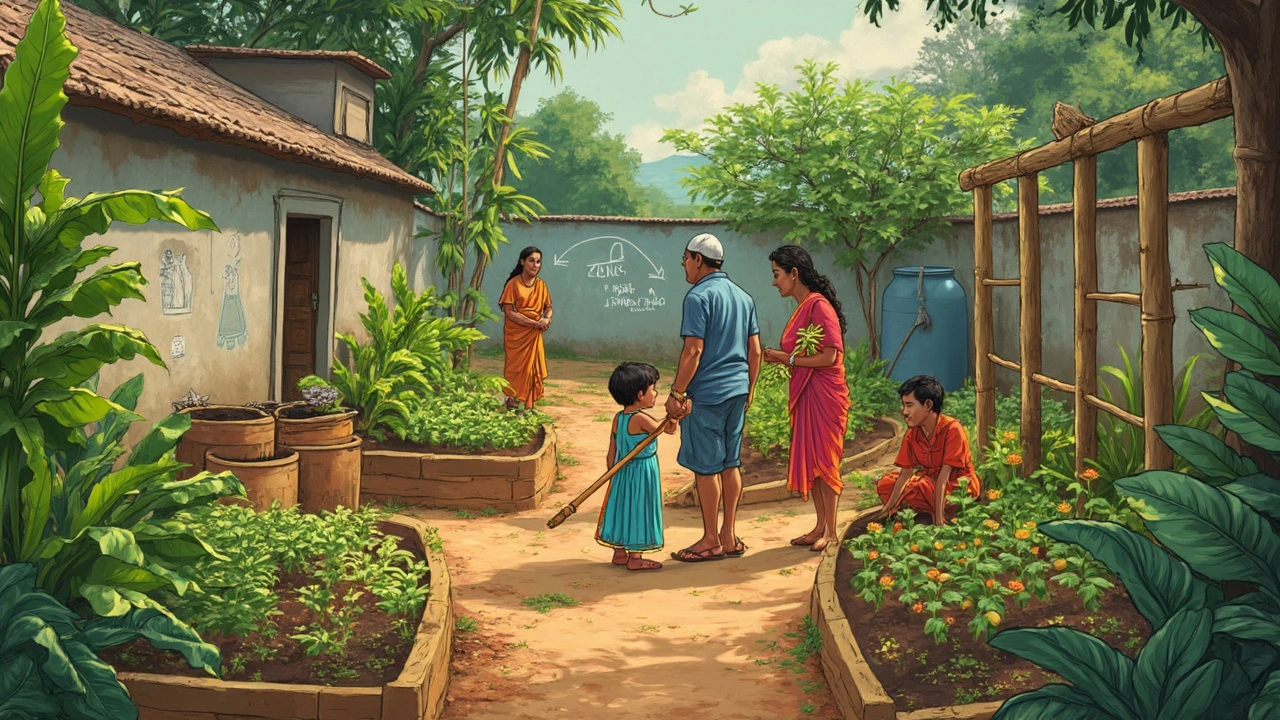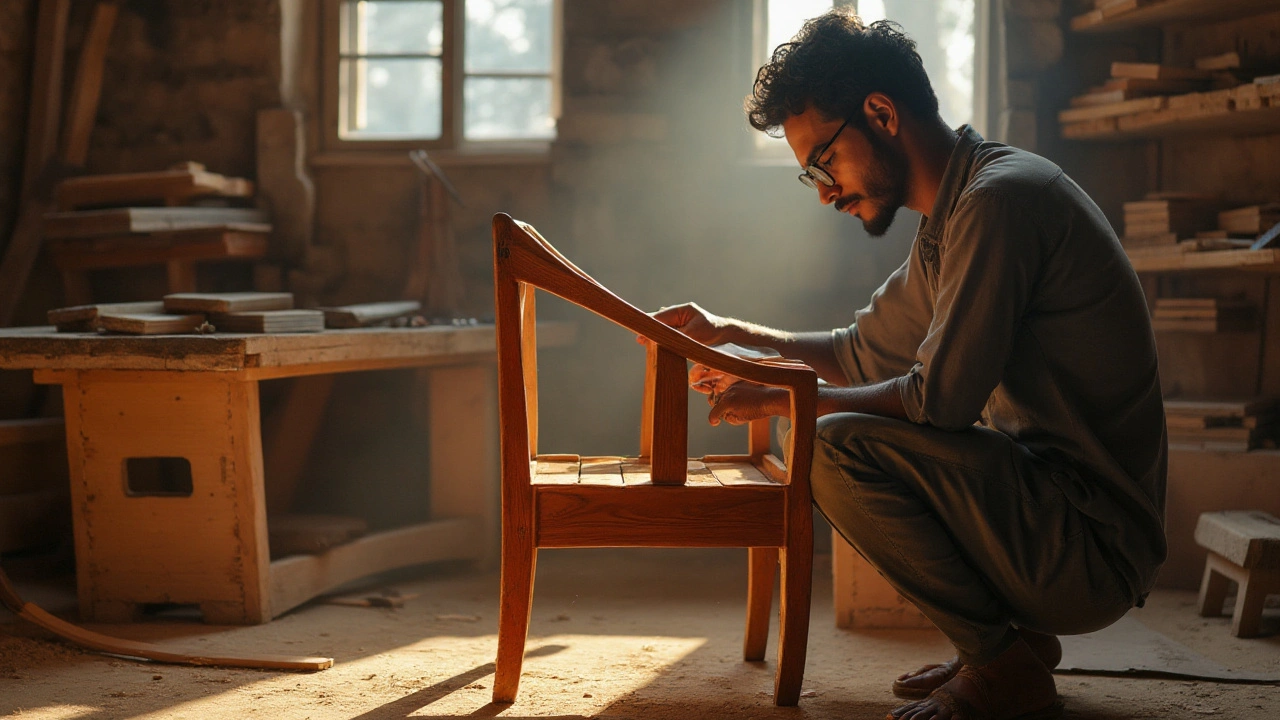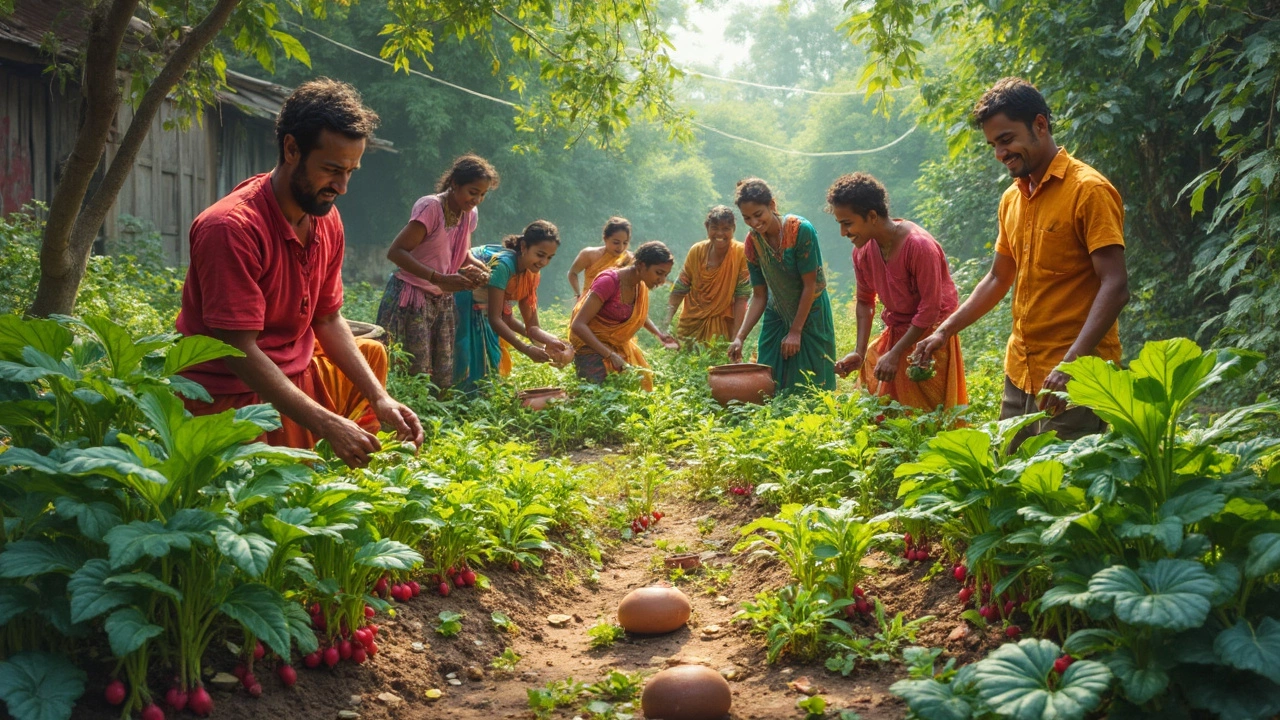Shade-Loving Plants for Your Balcony Garden: What Actually Grows
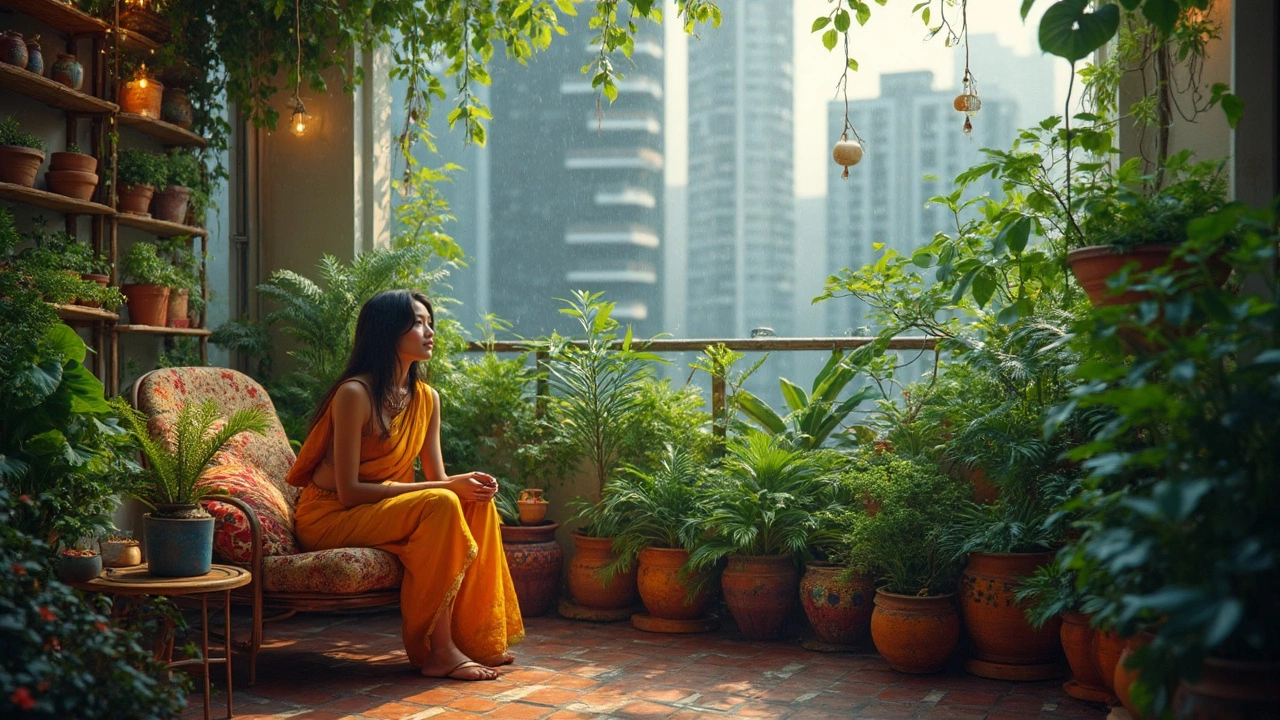
So you want a balcony garden but barely get any sun? You’re far from alone—I’ve spent more time than I want to admit figuring out which plants survive in the city shadows. Turns out, there’s actually a solid list of green buddies that don’t mind being out of the sun’s spotlight.
First thing’s first: don’t waste cash on sun-lovers like tomatoes or marigolds unless you like disappointment. Instead, there are some real champions out there—ferns, snake plants, peace lilies, and caladiums practically laugh at lack of direct sunlight. Want edible greens? Think spinach, mint, coriander. These guys are happy with less light and still give you that fresh, homegrown vibe.
I used to think low-light meant you had to settle for boring. Wrong. There are crazy colorful coleus, striking hostas, and even some begonias that light up a dull spot without the sun’s help. Plus, when you pick the right plants, you spend less time stressing about burnt leaves or dried-out soil. It’s less work and more win. Ready to turn that gloomy balcony into something amazing? There’s plenty of shade-loving picks that’ll turn it around.
- Decoding Shade on Your Balcony
- Reliable Shade-Tolerant Greens
- Edibles That Thrive Without Much Sun
- Color Splash: Best Shade Flowers
- Common Mistakes and Smart Fixes
- Practical Tips for Shade Success
Decoding Shade on Your Balcony
If you’re not sure what type of shade your balcony gets, you’re not alone—getting this right is huge for picking the right green buddies. It’s not just about whether you see the sun or not. Different types of shade make a big difference. Here’s how folks usually describe shade:
- Light Shade: Your balcony gets indirect light or a bit of filtered sun, usually for less than four hours a day. Maybe there’s a tree or another building blocking harsh light.
- Partial Shade: Somewhere between three to six hours of sun, and usually morning or late afternoon rays, not that crazy midday sun.
- Full Shade: Pretty much no direct sun, maybe just a glow. This is usually north-facing spots or balconies always under something like an awning.
Why does this labeling matter? Different shade plants really care about it. Too much sun? Their leaves crisp up fast. Not enough? They don’t grow, period. I learned this the hard way during my first failed spinach attempt—it basically sat there and sulked for weeks.
Here’s a quick comparison so you can match your balcony setup to the right plant type:
| Shade Type | Direct Sun (hrs/day) | Best Balcony Direction | Examples |
|---|---|---|---|
| Light Shade | 1-4 | East/West-facing | Ferns, Impatiens |
| Partial Shade | 3-6 | East/West-facing | Mint, Coleus |
| Full Shade | <1 | North-facing | Peace Lily, Snake Plant |
One thing I always recommend: spend a day checking out where the sunlight actually hits. Snap photos with your phone morning, noon, and late afternoon. This way you know exactly what you’re working with—no guessing, no wasted trips to the nursery. Once you’ve got your shade type nailed down, picking the right plants is way easier and you can finally get some green without the headache.
Reliable Shade-Tolerant Greens
If your balcony is never the sunniest spot on the block, the right greens can still make it come alive. It’s about picking plants that don’t throw a fit when the sun barely shows up. Here’s where shade-tolerant plants save the day—they thrive in spots where others don’t even try.
Ferns top the list. Boston ferns and maidenhair ferns are both super reliable for city balconies with low light. These guys have been around for ages, sprouting lush leaves even under tree canopies. Give them a steady mist and keep their soil damp but not soggy. In the rainy season, you’ll pretty much just watch them do their thing. And did you know Boston ferns can help clean the air? NASA found they’re champs for removing common indoor toxins.
If you want something even tougher, go with the classic snake plant (a.k.a. mother-in-law’s tongue). Too many beginners skip over this one thinking it’s just for grandma’s living room, but it’s basically un-killable. Snake plants can sit in deep shade and still look cool, sending up new leaves even if you occasionally forget to water them. They also filter formaldehyde—bonus points if you’ve got city pollution drifting in.
Don’t skip peace lilies. These glossy-leaved plants handle low light well, and if you’re lucky, you’ll get those showy white blooms even if sunlight is rare. Keep the soil a little moist and wipe down the leaves now and then, and you’re set. Still, don’t let them sit in water—those roots rot fast.
Other shady MVPs:
- Calatheas – Wild patterns, like living art; love humidity
- Shade plants like pothos – Great for beginners, grow fast, almost impossible to kill
- Cast iron plant – Literally named for its toughness, shrugs off neglect and low light
- Spider plant – Bounces back from almost any mistake, safe for pets
- Aspidistra – Known as the "bar room plant," built for hard times and dim corners
How do these greens stack up in terms of shade tolerance and care? Here’s a quick look:
| Plant | Shade Tolerance (1 = Low, 5 = High) | Watering Needs | Pet Safe |
|---|---|---|---|
| Boston Fern | 5 | Medium | Yes |
| Snake Plant | 4 | Low | No |
| Peace Lily | 4 | Medium | No |
| Pothos | 5 | Low | No |
| Aspidistra | 5 | Low | Yes |
| Spider Plant | 4 | Medium | Yes |
If you’re after easy wins, start with a couple from this list. Place them near balcony railings, let them settle in, and you’ll be surprised by how much greenery you get for almost zero sunlight. For a high-impact display, combine different leaf shapes and heights—it really wakes up a small, shady space.
Edibles That Thrive Without Much Sun
Most folks think you need a blazing sunny spot to grow food, but that's just not true. Some of the easiest leafy greens and herbs actually prefer partial shade or dappled sunlight, which is perfect for a balcony garden that sits in the shadows for most of the day.
Let’s get straight to the real MVPs. Spinach, lettuce, arugula, and Swiss chard will all give you decent harvests on just 3-4 hours of indirect light. They don’t bolt (shoot up flowers and go bitter) as quickly as they do in strong sun, so you get a longer picking window too.
Mint is basically un-killable in shade, and coriander (cilantro) is surprisingly chill about limited light. Chives, parsley, and even green onions will keep going as long as the soil’s not soggy. If you like Asian cooking, bok choy and mustard greens make quick, crunchy salads or stir-fries—just give them at least a few hours of daylight or bright reflected light.
Here’s a handy chart of how much shade-tolerant edibles need to do their thing (assuming your balcony gets mostly indirect light):
| Edible Plant | Min. Daily Light Needed | Biggest Perk |
|---|---|---|
| Spinach | 3-4 hrs indirect | Slow to bolt, rich in iron |
| Lettuce | 3 hrs indirect | Consistent harvest, soft leaves |
| Mint | 2-3 hrs indirect | Hardy, spreads fast |
| Coriander | 3 hrs indirect | Flavorful, doesn't mind cool |
| Chives | 2 hrs indirect | Low-fuss, keeps growing |
| Swiss Chard | 3-4 hrs indirect | Colorful, multiple harvests |
| Bok Choy | 3-4 hrs indirect | Quick-growing, mild flavor |
To get the best results in your balcony garden, use wider but shallow containers so the roots don’t suffocate. Keep soil moist but not soggy—shade means pots stay wet longer. Feed every couple of weeks with a balanced liquid fertilizer, since nutrients don’t move as quickly in the cooler, darker corners.
Give these shade-tough veggies and herbs a go, and you’ll actually get to eat what you grow—even if the sun never sets your balcony on fire.
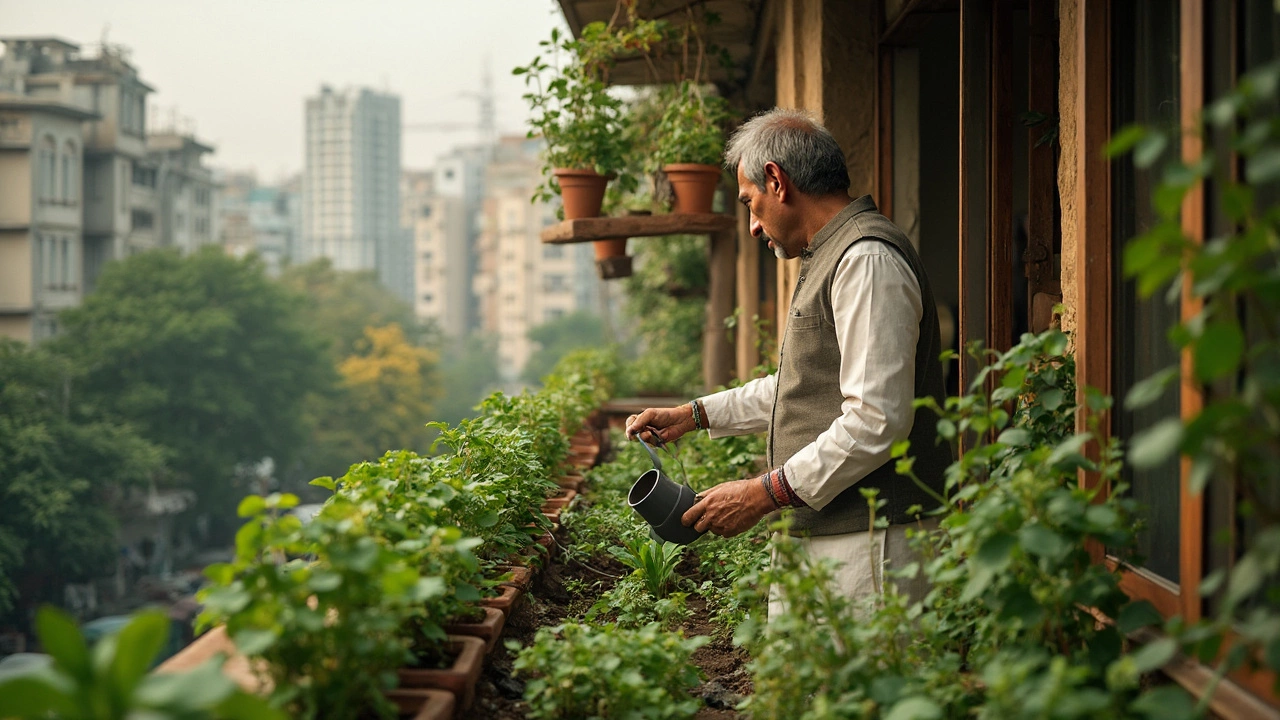
Color Splash: Best Shade Flowers
Think you’re stuck with an all-green balcony just because the sun’s playing hide and seek? No way. There are actually plenty of flowers that don’t just put up with shade—they look their best in it. You just have to know which ones to pick.
One of the top picks has to be impatiens. These guys don’t need direct sunlight, and they keep pumping out blooms in every color you’d want—pinks, reds, whites, purples. They’re basically the lazy gardener’s best friend. Another shade star? Begonias. The waxy kinds and the tuberous ones both do fine in shade, and you’ll get everything from bold reds to soft pastels.
If you want something a little different, try fuchsias. The bell-shaped flowers look pretty dramatic and last all summer if you keep the soil moist. Another balcony winner is torenia, or wishbone flower—those cute little purple and white flowers are super chill about sun and really brighten up corners.
- Shade plants like coleus might not be flowers, but their flashy leaves bring as much color as petals. Go for these if your space is super dim.
- Caladium is another leafy plant that pulls off the flower act with bold, splashy colors on the leaves themselves—think pinks, reds, and bright greens.
- Astilbe doesn’t just survive in shade, it thrives. The feathery plumes come in white, pink, or reddish-purple, and they hang around for ages.
Here’s where most people go wrong: grabbing petunias or marigolds for shady spots. Those need sun and will sulk, drop their flowers, or not bloom at all. Instead, fill your balcony with the guys above and you’ll actually see color, not just droopy greens. Make sure your pots have good drainage, keep the soil moist but not soggy, and add a little liquid fertilizer now and again—that’s pretty much it for happy, blooming shade flowers.
Common Mistakes and Smart Fixes
Even experienced gardeners mess up when dealing with shade on the balcony. A big headache? Picking the wrong plants—like sun-craving herbs or flowers—then wondering why they’re sad and scraggly after a few weeks. Stick with shade champions and you’ll side-step that letdown right from the start.
- Overwatering: It’s super tempting to water often, but many shade plants don’t dry out as quickly as those in direct sun. If roots sit in soggy soil, you’re signing up for root rot. Always check an inch under the top soil—if it’s still moist, hold off on watering.
- Ignoring airflow: People cram too many pots together, thinking they’re maximizing space. What really happens is more humidity, less airflow, and a front-row seat to fungal problems.
- Not feeding right: Shade-loving plants don’t burn through energy as fast as their sun-loving cousins. Using heavy-handed fertilizer can do more harm than good. Go for a balanced, slow-release type, and cut back in winter months.
- Wrong pot size: Huge pots hold water longer, especially in the shade. This is another shortcut to soggy plant problems. Go with pots that fit the roots of your plant, not ones that look impressive on the balcony.
- No scouting for pests: Shade sometimes means you’ll get more snails, slugs, and fungus gnats. Get ahead by checking leaves and soil often, and act quick with safe remedies like neem oil or sticky traps.
| Mistake | Quick Fix |
|---|---|
| Overwatering | Water only when soil feels dry to the touch; use pots with drainage holes. |
| Poor Airflow | Space pots so leaves aren’t touching; prune dead leaves. |
| Overfertilizing | Use balanced, slow-release fertilizer sparingly—just a couple times per year. |
| Using Big Pots | Pick pot size according to plant’s current root size. |
| Ignoring Pests | Check leaves and soil weekly; remove pests by hand or use organic treatments. |
One thing I learned the hard way: Those cute decorative pots with no drainage? Guaranteed to drown your plant in a shady spot. Also, more than half of failed balcony garden setups happen because people underestimate the time shade stretches out soil moisture. So, grab a cheap soil meter or just poke your finger in the dirt. Trust me, your plants will thank you for it.
Practical Tips for Shade Success
Getting your shade plants to actually thrive on the balcony takes a bit of strategy. It's totally doable, but a few tweaks go a long way if the sunlight is on vacation most of the day.
- Pick the right containers: Go for pots with good drainage. Shady spots can stay damp, so you’re better off letting extra water escape rather than risk root rot. Plastic or glazed pots help keep in just enough moisture without going overboard.
- Don’t overwater: Low-light means slower evaporation. Stick your finger two inches into the soil—if it’s still damp, skip the watering. Most shade plants would rather be a little dry than sit in soggy soil.
- Clean leaves regularly: Dust can build up fast on pale green or wide leaves, blocking the good stuff they need—light. Wipe them down with a damp cloth once a month. Your plants will actually grow better this way.
- Keen on fertilizer? Go light. Dark corners mean slow growth, so monthly feeding during spring and summer is plenty. Use a balanced, diluted liquid fertilizer so you don’t scorch the roots.
- Rotate your pots: Even with no direct sun, one side of a pot usually gets a bit more brightness. Spin your pots every couple weeks to keep plants growing straight instead of reaching lopsided for any available light.
- Consider reflective surfaces: Place mirrors or bright objects behind your plants to bump up the available light. Even a cheap white tile or plastic tray can bounce extra rays onto the leaves and boost growth.
There’s data showing some classic balcony greens—like ferns and calatheas—need less than four hours of indirect light a day and still stay healthy. To help you out, here’s a quick cheat-sheet:
| Plant | Minimum Light Needed /day | Top Care Tip |
|---|---|---|
| Boston Fern | 2-3 hours indirect | Mist leaves to keep humidity up |
| Peace Lily | 2-4 hours indirect | Let soil dry slightly between waterings |
| Coleus | 3 hours indirect | Pinch tips for bushier growth |
| Mint | 3-4 hours filtered | Frequent trims encourage more leaves |
One last thing—if mold shows up on the soil, point a small desk fan at the plants once in a while to get the air moving. Stagnant air is a trouble magnet in shady, damp spaces. Set up your routine, watch for what works best, and you’ll be surprised how cheery your balcony feels even without the sun.

